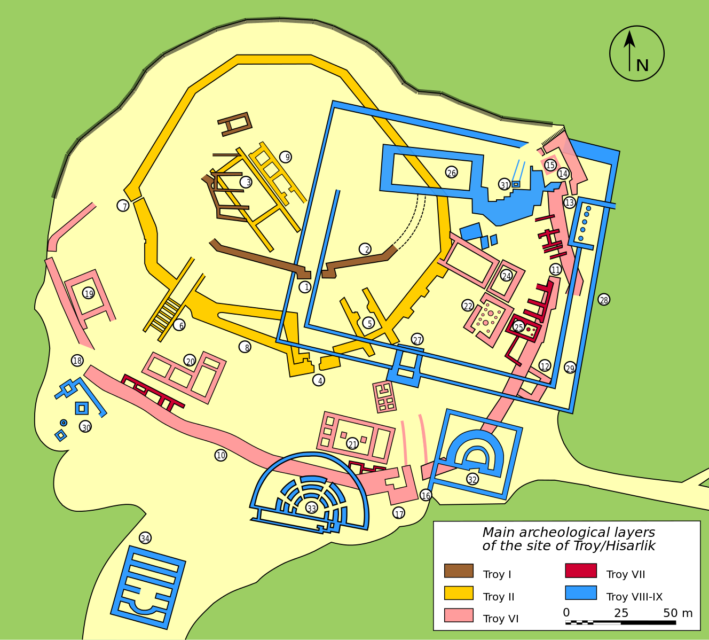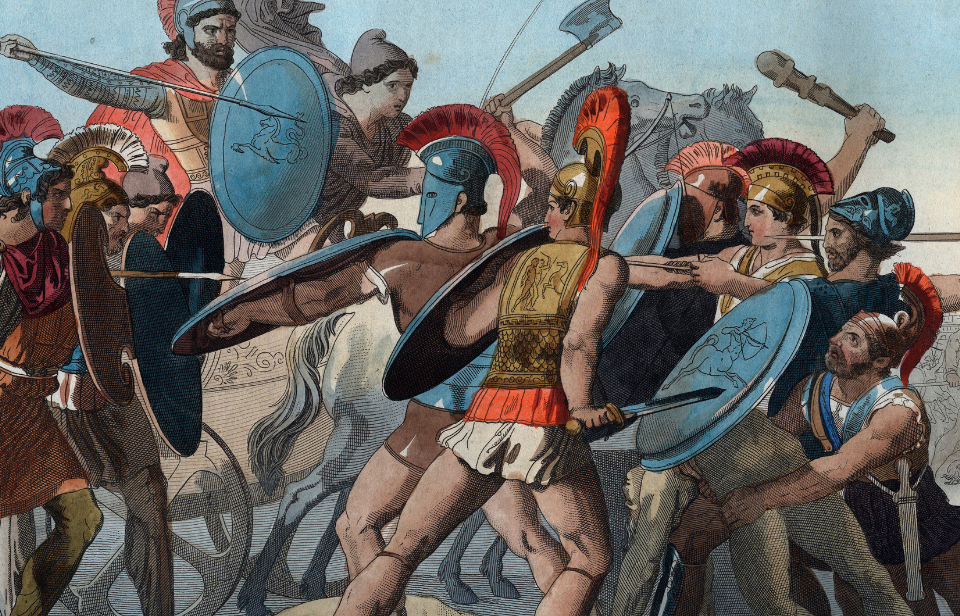The Trojan War remains one of the greatest stories from ancient times. Filled with strong warriors, heroes, epic battles, divine intervention and a giant wooden horse, the conflict has been taken as a real historical event that happened thousands of years ago. However, the mythic stature of this story has led historians and archaeologists alike to have a tough time believing it truly happened.
Here, we present evidence that both supports and undermines the actuality of the Trojan War.
What occurred during the Trojan War?

Technically speaking, the Trojan War falls under the category of a myth. Myths typically involve the supernatural in the form of gods, monsters and heroes. According to ancient Greek mythology, Paris, the Trojan prince, ran off with Helen, the wife of Menelaus (the king of Sparta). Menelaus’s brother Agamemnon then led a Greek expedition against Troy to avenge his brother.
The Trojan War was said to have occurred over 10 years, until the Greeks pretended to withdraw, leaving behind a large wooden horse. Concealed in this was a raiding party, and when the Trojans brought the horse into the city, the hidden Greeks opened the gates to their comrades waiting on the other side, who then sacked Troy and won the Trojan War.
The Trojan War is documented in many works of Greek literature, most notably in Homer’s Iliad. However, other parts of the conflict have been described in ancient Greek epics that have survived in fragments.
Part of the Trojan War’s retelling in Greek literature is because the ancient Greeks absolutely believed the Trojan War had been a historical event in the past. In the 5th century BC, for example, Herodotus, the so-called “father of history,” dated the conflict to about 800 years before his own lifetime. Similarly, ancient Greek mathematician Eratosthenes came up with a more specific date range, stating the war took place sometime around 1184 BC.
Thus, the Trojan War myth was passed down, generation to generation, because the ancient Greeks believed their own ancestors took part in the conflict.
Is there any truth to the myth?

The site of Hisarlik, in modern-day northwest Turkey, has been identified as the site of Troy. Archaeological research shows that the location was inhabited for nearly 4,000 years, starting around 3,000 BC. It also indicates that, if a city were destroyed, a new one would be built on top of it, creating a human-made mound known as a “tell.”
According to University of Amsterdam researcher Gert Jan van Wijngaarden, there are at least 10 Troys, in layers on top of each other. Troy as a city began after 2550 BC, when it was enlarged and fashioned with the massive defensive wall that’s become immortalized in pop culture today. Classical writers, like Homer and Eratosthenes, date the Trojan War to around 1200 BC, and, if one looks at the archaeological evidence, it might point to some sort of conflict happening in Troy around that time.
There’s evidence to suggest that Troy VI suffered earthquake damage, perhaps sometime in the early 1200s BC, which most likely weakened its defenses. Furthermore, evidence from Troy VII suggests a fire caused severe damage around 1190-1180 BC.
This evidence matches the date range given to us by Homer. Still, it’s important to remember the ancient scholars who landed on these dates really had no concept of time in the same way we do today. Instead, Homer and his counterparts situated their stories in a vaguely defined “beforetime” – an age of heroes and gods.
Another piece of evidence that, perhaps, suggests a conflict occurring in Troy is the finding of arrowheads on the VII layer. The arrowheads found on this excavation layer could suggest some sort of war, especially because they match the timeframe Homer suggested the Trojan War happened.
There are also inscriptions from the Hittites (an ancient civilization based in central Turkey) that depict a Trojan conflict. They describe a dispute over the city, which they knew as “Wilusa,” and “Ahhiyawa,” which could be a Hittisied version of the Greek name “Achaia” – a term associated with the Greeks in Homer.
Evidence against the Trojan War

While there are tidbits of historical evidence supporting some sort of conflict in Troy, there’s more evidence that goes against one.
The first gaping hole is there’s no Greek or Mycenaean archaeological evidence to suggest the city’s destruction. In fact, legend states Troy was completely destroyed after the 10-year war, when, in fact, Troy continued to be inhabited until about 950 BC.
Similarly, the evidence of fire in Troy VII doesn’t necessarily indicate a violent conflict. There’s concrete evidence present to tell archaeologists that the Hittites definitely did sack Troy around 1500-1400 BC. If the Greeks truly were in a war with the Trojans for 10 years and wound up sacking the city, one would think similar evidence would be found in excavations.
Finally, the surviving Hittite inscriptions describe a conflict, but there’s absolutely no mention of a military engagement between the Trojans and Greeks. In fact, the dispute seems to have been more of a diplomatic one, rather than a military conflict.
Reality of the Trojan War

Of course, we’ll never truly know if a large-scale Trojan War truly happened. However, looking at the archaeological evidence that has been found at the Troy site, it’s more realistic to state that, perhaps, there were several armed conflicts around the city toward the end of the Late Bronze Age.
More from us: The Real-Life Aircraft And Battles That Inspired ‘Star Wars’
Want to become a trivia master? Sign up for our War History Fact of the Day newsletter!
Homer’s accounts of the Trojan War have the potential to be based on real historical events. However, until there’s definitive evidence supporting or denying a major Greek–Trojan conflict, it will continue to be retold over and over, helping the story to continue to live on for perhaps a thousand more years.
